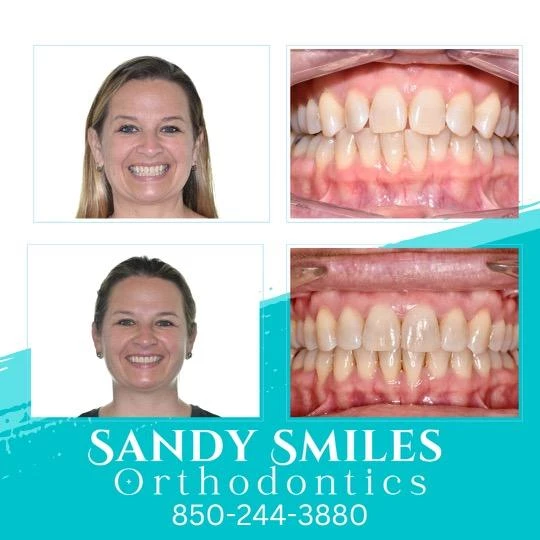Invisalign vs. Standard Dental braces: Which Alternative Is Right for You?
When considering orthodontic therapy, the option between Invisalign and traditional dental braces provides a number of important factors that warrant cautious assessment. Invisalign offers a very discreet option with removable aligners, while typical dental braces offer a more noticeable yet effective solution for severe misalignment.
Introduction of Treatment Options

In comparison, typical braces contain steel brackets and wires that are adhered to the teeth. This approach applies constant stress with time to achieve positioning. While reliable for complex orthodontic issues, standard dental braces call for regular check outs for modifications and can posture obstacles in maintaining oral hygiene because of the problem of cleansing about braces and cords.
Both options have their advantages, and the option commonly rests on specific oral problems, way of living choices, and patient compliance. Ultimately, speaking with an orthodontic expert is important for establishing one of the most suitable therapy strategy tailored to private needs. Comprehending the nuances of each option can considerably influence the overall success of orthodontic treatment.
Visual Factors To Consider
A considerable aspect influencing the choice between Invisalign and typical dental braces is the visual charm each treatment offers. Invisalign aligners are crafted from clear plastic, making them basically unseen when used. This discreet appearance is specifically attracting young adults and grownups who might really feel uncomfortable about their orthodontic therapy. The capability to maintain an all-natural smile throughout the positioning process can significantly boost the client's confidence in social and specialist settings.
On the other hand, standard braces are composed of metal brackets and cords, which can be a lot more noticeable. While improvements in orthodontic technology have actually led to the growth of smaller brackets and tinted elastics, traditional dental braces still maintain a more obvious profile. For some people, the exposure of dental braces may prevent them from looking for required therapy.
Ultimately, the option in between Invisalign and traditional braces may depend upon personal preferences pertaining to looks. Patients who prioritize discernment often favor Invisalign, while those who are much less concerned regarding presence may go with standard dental braces. Recognizing the aesthetic ramifications of each choice is critical for making an informed decision that lines up with one's lifestyle and preferences.
Comfort and Convenience

In regards to ease, Invisalign aligners are detachable, enabling individuals to appreciate their preferred foods without restriction and maintain ideal dental health. Brushing and flossing are streamlined, as the aligners can be secured during these regimens, whereas standard braces call for cautious maneuvering around braces and wires.
Additionally, Invisalign's dynamic system allows for less orthodontic visits. Individuals typically obtain several collections of aligners at the same time, which can streamline the therapy process and minimize time spent in the orthodontist's chair. In comparison, traditional dental braces necessitate routine changes, making them less hassle-free for those with busy timetables. Invisalign. Overall, the convenience and convenience of Invisalign make it an attractive selection for numerous people seeking orthodontic treatment.
Treatment Duration and Efficiency
While both Invisalign and traditional braces work in remedying oral imbalances, the duration of treatment can vary substantially in between the 2 options. Generally, Invisalign treatment can take anywhere from 12 to 18 months, depending upon the intricacy of the instance. The clear aligners function by progressively shifting teeth into their desired positions, and regular follow-ups with an orthodontist help guarantee development stays on the right track.
In comparison, typical dental braces usually call for a longer dedication, generally varying from 18 months to 3 years. This results from their set nature and the usage of braces and cables, which can be much more effective for severe misalignments and intricate instances (Invisalign). The treatment performance of typical dental braces is well-documented, as they enable for exact modifications and greater control over tooth movement
Inevitably, the selection in between Invisalign and conventional braces might pivot on both the expected treatment period and the details dental issues handy. Consulting with an orthodontist is critical, as they can give tailored recommendations based upon private needs, guaranteeing the chosen approach lines up with desired timeframes and results.
Cost Contrast and Insurance Coverage Options
Price plays a considerable role in the decision-making procedure for individuals taking into consideration orthodontic therapy, whether going with Invisalign or typical braces. Generally, the expense of Invisalign arrays from $3,000 to $8,000, while standard braces normally cost in between $2,000 and $6,000. Elements affecting these expenses include the intricacy of the case, the period of therapy, and geographical place.
Insurance policy protection can dramatically affect out-of-pocket expenditures. Numerous oral insurance strategies give partial protection for orthodontic therapies, but the specifics can vary extensively. It is essential for people to evaluate their insurance plan to get redirected here identify the degree of insurance coverage for either option. Normally, traditional braces may be extra frequently covered by insurance coverage strategies contrasted to Invisalign, which some insurance providers classify as an aesthetic treatment.
Furthermore, a number of orthodontic methods use adaptable layaway plan, making both therapy alternatives more accessible. Clients ought to ask regarding prospective financing options and discounts for upfront payments. Assessing the total cost, consisting of insurance policy advantages and repayment plans, is important for making an informed decision that aligns with both visual choices and budget plan considerations.

Verdict
In recap, the option between Invisalign and typical braces rests on multiple variables, consisting of aesthetic preferences, convenience, therapy duration, and cost. Invisalign offers a very discreet, detachable option that facilitates dental health and dietary adaptability, while standard braces might be better for complicated dental concerns and commonly come at a published here reduced cost point. Inevitably, examination with an orthodontist is necessary to assess specific situations and determine one of the most suitable therapy choice for achieving optimum dental positioning.
When thinking about orthodontic therapy, the option in between Invisalign and conventional dental braces provides numerous crucial factors that warrant careful examination.Comparing Invisalign and standard dental braces exposes distinctive treatment choices for orthodontic correction.While both Invisalign and standard you could try these out braces are efficient in dealing with dental imbalances, the period of treatment can vary dramatically between the 2 alternatives.Cost plays a considerable duty in the decision-making process for individuals taking into consideration orthodontic treatment, whether choosing for Invisalign or typical dental braces.In summary, the option in between Invisalign and traditional braces hinges on numerous variables, including aesthetic choices, convenience, therapy duration, and cost.
 Anna Chlumsky Then & Now!
Anna Chlumsky Then & Now! Charlie Korsmo Then & Now!
Charlie Korsmo Then & Now! Macaulay Culkin Then & Now!
Macaulay Culkin Then & Now! Kelly Le Brock Then & Now!
Kelly Le Brock Then & Now! Nadia Bjorlin Then & Now!
Nadia Bjorlin Then & Now!